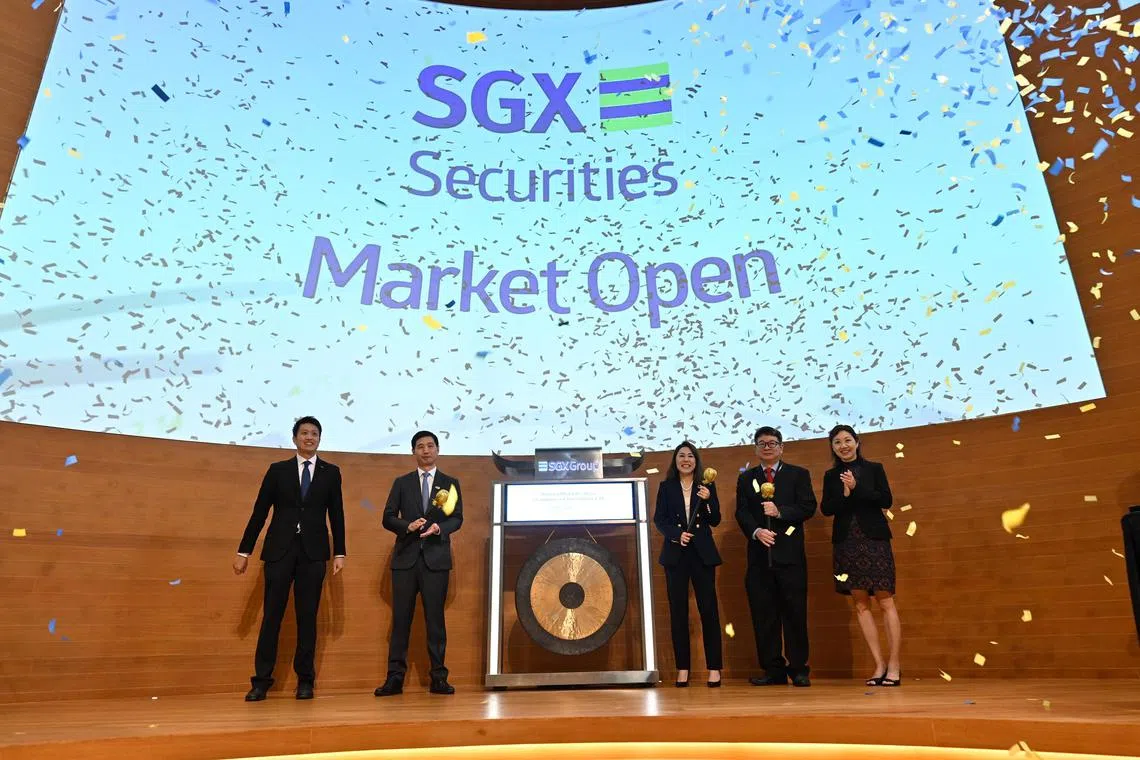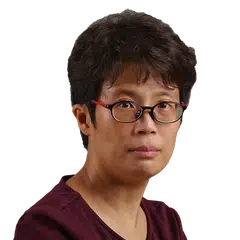49 exchange-traded funds on SGX following two such recent listings
Sign up now: Get ST's newsletters delivered to your inbox

The Amova MSCI All Countries Asia ex Japan ex China Index ETF, listed on the SGX on April 2, allows investors to ride on the growth in emerging and developed markets in South-east Asia, as well as Taiwan, South Korea and India.
PHOTO: ST FILE
Follow topic:
SINGAPORE – Retail investors will have more options following the listing of two exchange-traded funds (ETFs) in recent weeks to add to the 47 already on the Singapore Exchange (SGX).
The ETF that listed on April 2 allows investors to ride on the growth in emerging and developed markets in South-east Asia, as well as Taiwan, South Korea and India, but excluding Japan and China.
Investors keen to ride on China’s recovery and earn dividends at the same time can try the ETF listed on March 28.
The two new listings – the Amova MSCI All Countries Asia ex Japan ex China Index ETF and the Lion-China Merchants CSI Dividend Index ETF – bring to 49 the number of ETFs on the SGX. They have combined assets under management of about $14 billion, noted the exchange.
These ETFs allow investors to invest with ease in different regions and in a range of asset classes such as stocks, bonds, real estate investment trusts (Reits) and gold, or in themes such as sustainability.
Dr David Kuo, co-founder of financial education site The Smart Investor, said investors in Singapore benefit from having a wide range of ETFs available.
Without an ETF, a local investor who wanted to invest in firms such as chipmaker Taiwan Semiconductor Manufacturing Company (TSMC), South Korea’s Samsung Electronics, India’s HDFC Bank or Chinese state-owned shipping group Cosco Shipping would have to do so on the respective foreign share markets.
But an ETF allows investors to get exposure to overseas companies “without taking on too much risk because the investor is still staying in the Singapore market”, said Dr Kuo, adding that it may even attract outside investors to come here to invest.
Nikko Asset Management (Nikko AM), which will change its name to Amova Asset Management on Sept 1, listed the Amova MSCI All Countries Asia ex Japan ex China Index ETF on April 2, making it the firm’s seventh such fund on the local exchange.
It is also the first ETF on the SGX to provide “focused exposure” to Asia, excluding Japan and China, said Ms Eleanor Seet, head of Asia ex Japan and president of Nikko Asset Management Asia.
The ETF tracks the MSCI All Countries Asia ex Japan ex China Index and provides access to large- and mid-cap companies such as TSMC, Samsung Electronics, HDFC Bank, insurer AIA Group and DBS Group.
The bulk of its exposure is in Taiwan (32.4 per cent), India (31.9 per cent) and South Korea (14.8 per cent), with South-east Asia – namely Singapore, Malaysia, Indonesia, Thailand and the Philippines – comprising 14 per cent and Hong Kong making up the remaining 6.9 per cent.
Ms Seet added that most investors would already have – or want to have – exposure to the huge markets of Japan and China, and taking these economies out of the new ETF gives investors a “more precise way” to capture growth in other parts of Asia.
She added that investors can make decisions on their Japanese and Chinese investments separately, making the ETF “quite a nice complement” in their portfolio.
The Amova ETF seeks to capture long-term trends such as artificial intelligence, the rise of the Indian investor and the growth of Asean as a manufacturing hub, Nikko AM said.
“We think of it as an expansion and a deepening of our current suite (of ETFs) on the SGX,” said Ms Seet, adding that “it is not just about having additional offerings, it also has to be meaningful”.
Lion Global Investors listed its first ETF dedicated to A-share companies listed in Shanghai and Shenzhen on March 28.
The Lion-China Merchants CSI Dividend Index ETF is diversified across dividend-paying sectors in mainland China, such as financials, industrials and energy.
It counts shipping group Cosco Shipping, auto supplier Ningbo Huaxiang Electronic and Guangdong Provincial Expressway Development, which is in the toll expressway and bridges market, among its top 10 constituents.
Mr Ong Xun Xiang, head of ETFs at Lion Global Investors, said investors looking to invest in China may want to focus on dividend-paying stocks, which “offer a more stable and profitable strategy, particularly in times of market uncertainty”.
He further noted that the ETF listed in China has delivered an average net dividend yield of 4.6 per cent over the past four years.
This China-focused dividend ETF provides investors with an alternative choice to access China’s growth and complements two other Chinese-related offerings from the asset manager.
The Lion-OCBC Securities Hang Seng Tech ETF is a pure Chinese tech sector play, while the Lion-OCBC Securities China Leaders ETF gives investors exposure to 80 large companies listed in mainland China and Hong Kong, including China Construction Bank and chip foundry Semiconductor Manufacturing International.
“We believe China could be the dark horse of 2025,” Mr Ong said.
The Lion-China Merchants CSI Dividend Index ETF is Lion Global Investors’ eighth ETF on the SGX.
Mr Ong noted that ETFs are like Lego building blocks that investors can mix and match to build their own portfolio.
The Smart Investor’s Dr Kuo added that this strategy of using ETFs to build a diversified portfolio is particularly useful for two types of investors.
People working in sectors like banking or accountancy find it difficult to invest in individual stocks because of conflict-of-interest issues. “In this instance, it will be better for them to buy ETFs than it would be to invest in a particular company,” he said.

(From left) Mr Paul Lin from Nikko Am; SGX’s Mr Ng Yao Loong; Ms Eleanor Seet, head of Asia ex Japan and president of Nikko AM Asia; and Mr Phillip Yeo and Ms Joyce Koh, both from Nikko AM.
PHOTO: NIKKO ASSET MANAGEMENT
Another group of investors simply have no time to read up on the individual companies to invest in.
“If one does not have the time to construct his own portfolio, then the ETF is definitely the best way forward,” Dr Kuo said, adding that investors will have to take a long-term view of their ETF investments.
They could put in a fixed amount every month and let the investment grow over time, a strategy known as dollar-cost averaging, he said.
Investors here can invest as little as $100 a month in ETFs, blue-chip stocks or Reits through regular shares savings plans.
“Who could have guessed that the Straits Times Index would have jumped as much as it did,” Dr Kuo said. “If one has been dollar-cost averaging into the Singapore market, over the long term, one should do well,” he added.
There are any number of ways to invest now.
Nikko AM’s Ms Seet said her clients typically use ETFs, actively managed funds, direct stock investments and, increasingly, alternatives such as gold to construct a diversified portfolio.
Dr Kuo added: “You can have the ETF and the other stocks that you are bullish on. The ETF makes up the bulk – 95 per cent – of your portfolio and you put the rest in stocks that you are bullish on.”
“Eventually, you gain confidence and you put 80 per cent into the ETF and 20 per cent into the chosen stocks.”


